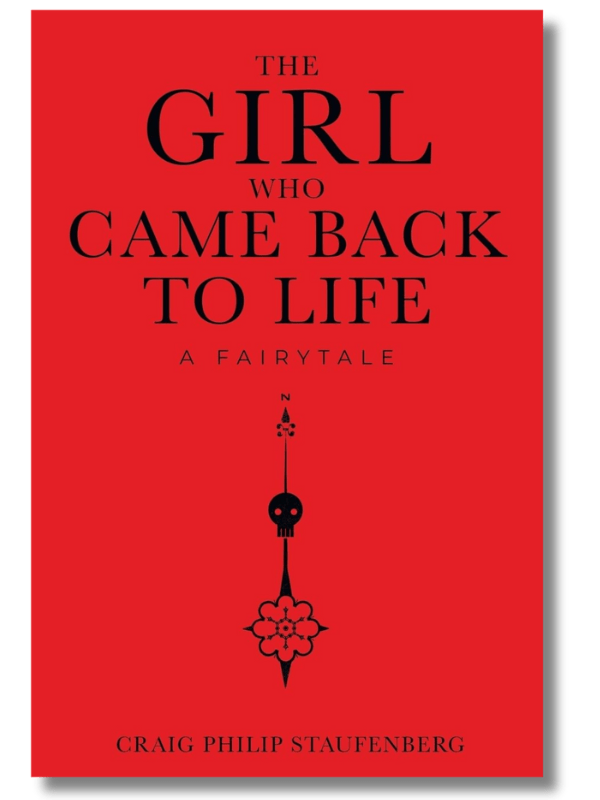The Girl Who Came Back to Life
by Craig Philip Staufenberg
Genre: Middle Grade Fiction
ISBN: 9781497532731
Print Length: 180 pages
Reviewed by Samantha Hui
A fairy tale where the true magic lies in the possibilities of the human spirit
The Girl Who Came Back to Life, by Craig Philip Staufenberg, transforms the question of what it means to live when everything is falling apart into a layered middle grade fairy tale that reads as both adventure and allegory.
Though filled with danger and loss, the book is ultimately about hope, forgiveness, and the ways grief can act as both a mask for denial and a tool for acceptance. Staufenberg leans into the myth-making tradition of fairy tales so that Sophie’s struggles resonate beyond her individual story. Readers who enjoy darker, more reflective fairytales will find themselves drawn to Sophie’s world. It’s a book that speaks not only to youth but also to older audiences who appreciate stories with moral and emotional depth.
“You must join the steady stream of mourners who pour north at all times to Send their loved ones, unwilling to let their dead wander forever through the cold.”
The novel follows Sophie, a twelve-year-old girl navigating a dangerous world after devastating loss leaves her unmoored. In this world, when someone dies, their spirit wakes in the City of the Dead, where they remain until a cherished loved one Sends them off with a heartfelt goodbye.
But when Sophie’s parents die suddenly, she refuses to let them go. Instead of Sending them, she concocts a plan to travel to the City of the Dead herself and bring them back. Left in the care of her estranged grandmother, Sophie’s complicated relationship with the old woman becomes one of the novel’s central tensions. As she ventures north, Sophie encounters mobs of mourners, desperate travelers, soldiers, and strangers who reveal both the cruelty and the kindness that emerge in times of crisis. These encounters slowly transform Sophie’s understanding of herself and of what it means to say goodbye.
“She showed her granddaughter the delusions people paint over their own eyes to avoid the devastation of loss, of all loss, of any loss, especially those small hits that wound the pride more than the purse.”
What makes the novel so powerful is Staufenberg’s style. His prose is simple yet resonant, echoing the cadences of classic fairy tales while grounding the narrative in very human emotions. At moments, his sentences are clipped and urgent, heightening the sense of danger; at others, they swell into lyrical rhythms that capture grief, longing, and fragile hope. His use of metaphor lends the story the weight of myth, making Sophie’s journey feel timeless while still accessible to middle grade readers.
“Some said the spirits of the dead killed you themselves if you met them with an insincere heart. And still others said the lost ones had chosen to leave with their loved ones, willingly leaving this world behind in favor of the next.”
If the book falters at all, it may be in its pacing. Early chapters return again and again to cycles of hunger, escape, and temporary relief, which may feel repetitive for some readers. Yet this repetition is intentional, mirroring Sophie’s own relentless struggle to survive. Likewise, some chapters are remarkably short, sometimes less than a page long, which can make the story feel fragmented. But these brief chapters also echo the rhythm of a journey broken into small steps, and for many readers, the structure will deepen rather than weaken the experience, immersing them more fully in Sophie’s world.
“When she lived, my daughter brought pain to my heart. After she died, she became a persistent wound I couldn’t heal.”
By the end, Staufenberg’s fairy tale leaves readers both weary and uplifted, as though they have walked Sophie’s long journey themselves. The Girl Who Came Back to Life immerses us in questions of love, grief, and acceptance while never losing its sense of wonder. It is a fairy tale in the truest sense: not about spells or enchantments, but about the human capacity to endure, to let go, and to find meaning in loss.
Thank you for reading Samantha Hui’s book review of The Girl Who Came Back to Life by Craig Philip Staufenberg! If you liked what you read, please spend some more time with us at the links below.
The post Book Review: The Girl Who Came Back to Life appeared first on Independent Book Review.
